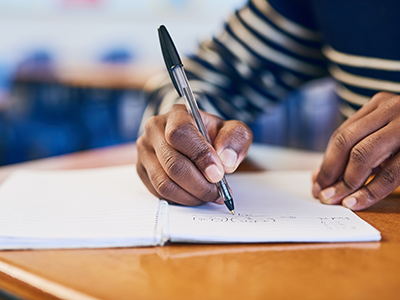This year may require more preparation to get into school mode, but these tips can help
 It's difficult enough during a "normal" year to get kids ready to go back to school after a long, lazy summer. But this certainly hasn't been a normal year. During the last school year, many kids went from in-person to hybrid to remote learning and back again. As head-spinning and stressful as it was for parents and teachers, it's been more anxiety-inducing for young minds.
It's difficult enough during a "normal" year to get kids ready to go back to school after a long, lazy summer. But this certainly hasn't been a normal year. During the last school year, many kids went from in-person to hybrid to remote learning and back again. As head-spinning and stressful as it was for parents and teachers, it's been more anxiety-inducing for young minds.
When it's time to head back to school this year, it's likely most schools will hold classes in person. Some children will be excited about this. Others will be anxious or have mixed feelings. Kids' anxiety may be rooted in the fear of the unknown. Will school look different? Will desks still be far apart? Will I be able to hang out with my friends? Will I be safe at school?
The back-to-school transition may be more difficult than usual this year. Here are 7 tips that can help make it easier for your kids (and for you):
- Be prepared. Every state has different regulations, and individual school districts may have their own requirements. Find out from school administrators what their safety plans are and whether COVID-19 vaccinations will be required for specific age groups. Read all information sent out, in case there's anything you need to do ahead of time and so you can prepare kids for what to expect when they get to school.
- Validate fears. The world experienced a collective trauma and it's normal for people to be anxious about resuming regular activities such as going back to school. Although you might feel some relief that you and your child will be getting back into a routine, recognize that it might not be easy at first for them – or for you.
- Go shopping. This year, more than ever, kids will likely enjoy the tradition of buying school supplies and a few new outfits for the school year. They might even enjoy grocery shopping to select some foods that will make brown-bagging it more exciting.
- Provide structure. Throughout the pandemic and during the summer, sleep cycles and mealtimes may not have been as structured as usual. Don't wait until the night before school starts to get your child back into a school routine. Gradually adapt to earlier bedtimes and earlier wake times so kids are ready to start school well rested.
- Model positivity. Ask your child open-ended, positive questions about how they're feeling about school. Instead of "Are you nervous?" try something like "What are you most excited about when school starts?" or "Which of your friends will you be happiest to see?"
- Observe carefully. Watch for signs that your child is struggling. Symptoms of stress include irritability, self-isolation, angry outbursts, changes in appetite and disrupted sleep patterns. Stay in touch with your child's teacher, in case anything is happening at school that you should be aware of. If you're unable to manage your child's anxiety, get help from a school counselor or a mental health professional.
- Be patient. The pandemic disrupted everyone's routines and made many people – especially kids – question their safety and security. It may take a little time for people to get comfortable going back to the way things used to be and that's okay. It took almost a year and a half to get through the pandemic. So you shouldn't expect to just snap your fingers and have everything feel like it did before it began.
Copyright 2021 © Baldwin Publishing, Inc. All rights reserved. Health eCooking® is a registered trademark of Baldwin Publishing, Inc. Cook eKitchen™ is a designated trademark of Baldwin Publishing, Inc. Any duplication or distribution of the information contained herein without the express approval of Baldwin Publishing, Inc. is strictly prohibited.
Learn more about Baldwin Publishing Inc. editorial policy, privacy policy, ADA compliance and sponsorship policy.
No information provided by Baldwin Publishing, Inc. in any article is a substitute for medical advice or treatment for any medical condition. Baldwin Publishing, Inc. strongly suggests that you use this information in consultation with your doctor or other health professional. Use or viewing of any Baldwin Publishing, Inc. article signifies your understanding and agreement to the disclaimer and acceptance of these terms of use.
